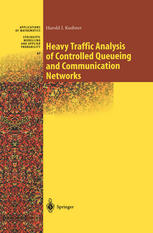

Most ebook files are in PDF format, so you can easily read them using various software such as Foxit Reader or directly on the Google Chrome browser.
Some ebook files are released by publishers in other formats such as .awz, .mobi, .epub, .fb2, etc. You may need to install specific software to read these formats on mobile/PC, such as Calibre.
Please read the tutorial at this link: https://ebookbell.com/faq
We offer FREE conversion to the popular formats you request; however, this may take some time. Therefore, right after payment, please email us, and we will try to provide the service as quickly as possible.
For some exceptional file formats or broken links (if any), please refrain from opening any disputes. Instead, email us first, and we will try to assist within a maximum of 6 hours.
EbookBell Team

4.7
86 reviewsThe aim of this book is the development of the heavy traffic approach to the modeling and analysis of queueing networks, both controlled and uncontrolled, and many applications to computer, communications, and manufacturing systems. The methods exploit the multiscale structure of the physical problem to get approximating models that have the form of reflected diffusion processes, either controlled or uncontrolled. These ap proximating models have the basic structure of the original problem, but are significantly simpler. Much of inessential detail is eliminated (or "av eraged out"). They greatly simplify analysis, design, and optimization and yield good approximations to problems that would otherwise be intractable, under broad conditions. Queueing-type processes are ubiquitous occurrences in operations re search, and in communications and computer systems. Indeed, it is hard to avoid them in modern technology. The subject is now about 100 years old. and there is an enormous literature. Impressive techniques, many based on Markov chain and ergodic theory, have been developed to han dle a great variety of models. A sampling of the numerous books includes [6, 8, 18, 27, 33, 46, 81, 86, 132, 133, 220, 243]. But the models of interest are growing fast in the face of the demands of new applications, particularly in communications and computer systems.